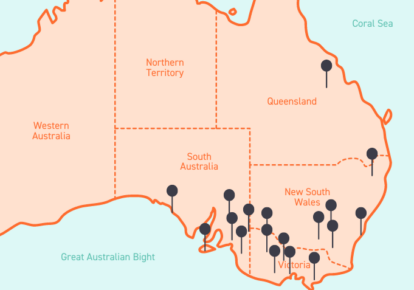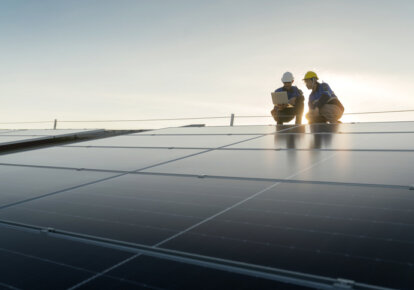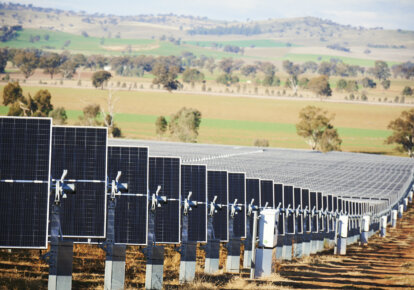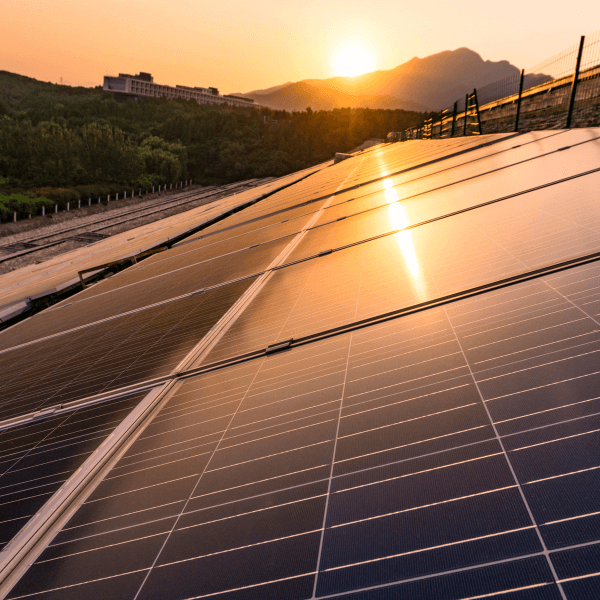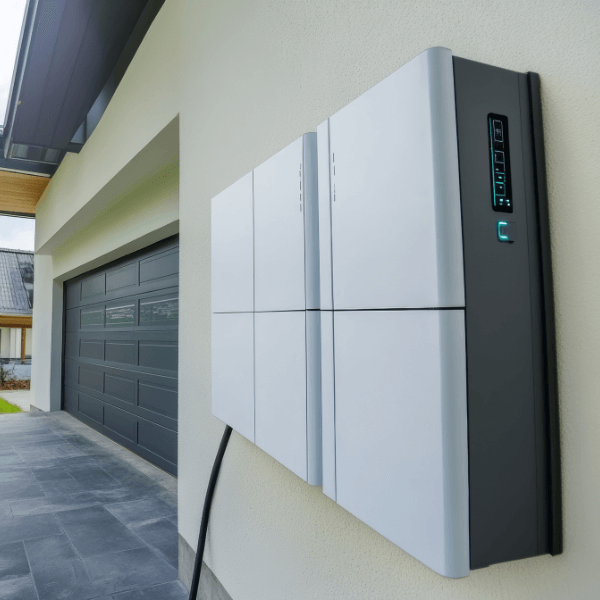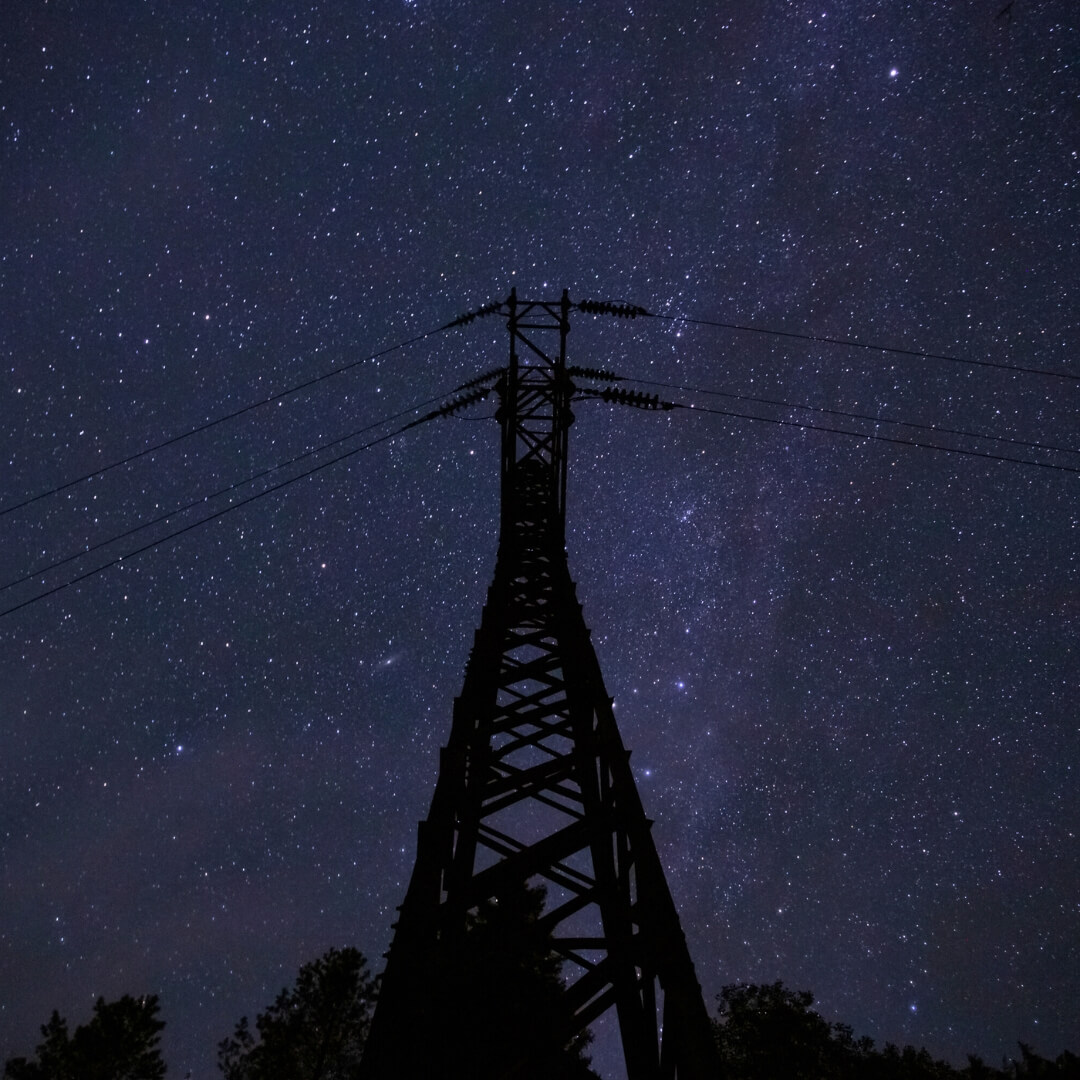In October, renewable records were set in all mainland NEM regions, alongside low average wholesale prices. All mainland regions had a high number of negatively priced intervals, corresponding with long periods during daylight hours with negative average prices through the month.
Electricity price insights
Like September, October had mostly low wholesale prices. This was partially due to higher temperatures which reduced electricity demand for heating compared to previous October in previous years.
Negative price records set in September 2023 were then broken in October 2023. This month had the greatest number of collective hours of negative prices across the NEM. The record setting was a team effort. There were extended periods of negative pricing in South Australia and Victoria, and record months for negative prices in New South Wales and Queensland.
Unexpectedly high demand in a single period in Queensland saw prices rise to $15,000/MWh, but this volatility was only brief.
Another bumper month for renewables
It was another record setting month in the NEM, with 44.74% of all energy generated being from renewable resources. While all mainland states individually beat previous records, honourable mention goes to Queensland, who’s renewable share has significantly increased since 2022, with October 2023 renewables increasing their share by 5% (from 29% to 34%) from the most renewable month in 2022.
These conditions mean there are opportunities for energy users. To the extent they can, energy consumers are encouraged to shift as much load as they can into times where renewable generation is high. In addition to using electricity from the grid when that electricity in greener, lower wholesale prices are strongly correlated with higher proportions of renewable generation in the mix.
Forward prices for calendar year 2024 contracts concluded the month by continuing the downward trend from previous months. Prices at the end of October were much lower than at the same time last year, with all mainland regions around 40% lower than where they were a year ago. For some customers, this made it an ideal time to forward contract to reduce their energy rate.

October 2023 NEM insights – by state
- New South Wales prices are down 39% from a year ago, and 15% from September 2023
- Queensland prices are down 40% from a year ago, and 13% from September 2023
- South Australia prices are down 41% from a year ago, and 9% from September 2023
- Victoria prices are down 36% from a year ago, and 11% from September 2023
New South Wales
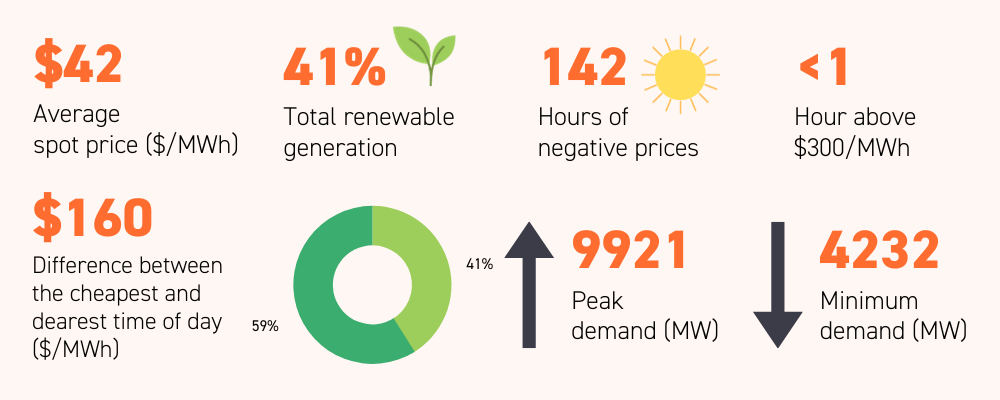
- Average spot price of $42/MWh, with 142 hours of negative prices and less than 1 hour above $300/MWh
- $160/MWh difference in average underlying spot prices at the cheapest and most expensive times of day
- Average prices were negative for all periods between 7:00 AM and 3:00 PM during the month
- 41% total renewable generation through the month
- Minimum demand of 4,232MW
- Peak demand of 9,921MW
Queensland
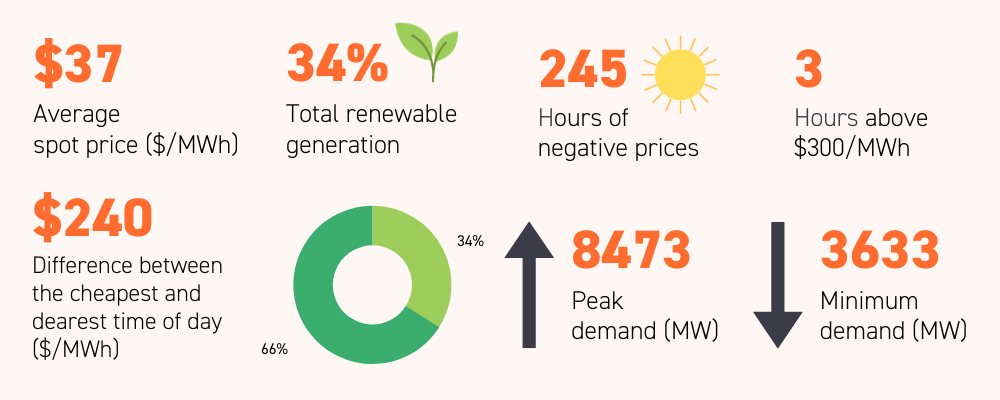
- Average spot price of $37/MWh, with a record 245 hours of negative prices and 3 hours above $300/MWh
- $240/MWh difference between the average underlying prices at the cheapest and most expensive times of day
- Average prices were negative for all periods between 7:30 AM and 3:30 PM during the month
- 34% total renewable generation through the month, a record for the region
- Minimum demand of 3,633MW
- Peak demand of 8,473MW
South Australia
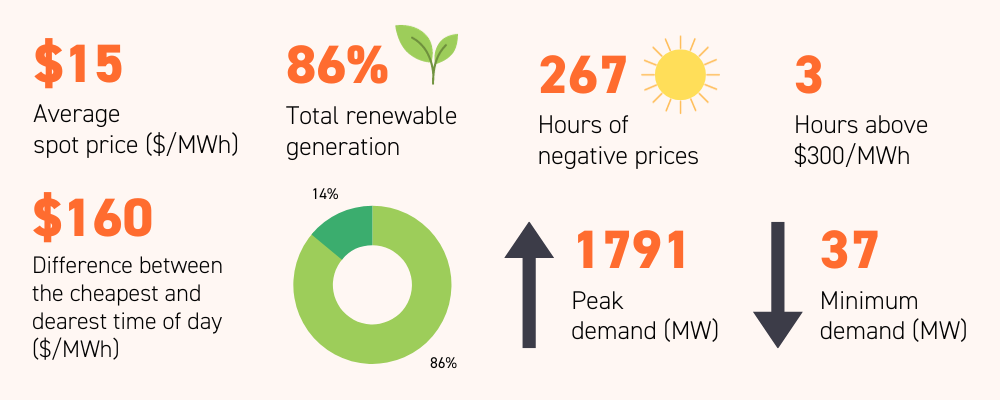
- Average spot price of $15/MWh, with 267 hours of negative prices and 3 hours above $300/MWh
- $160/MWh difference between the average underlying prices at the cheapest and most expensive times of the day
- Average prices were negative for all periods between 8:00 AM and 5:00 PM during the month
- 86% total renewable generation through the month
- Minimum demand of 37MW
- Peak demand of 1,791MW
Victoria
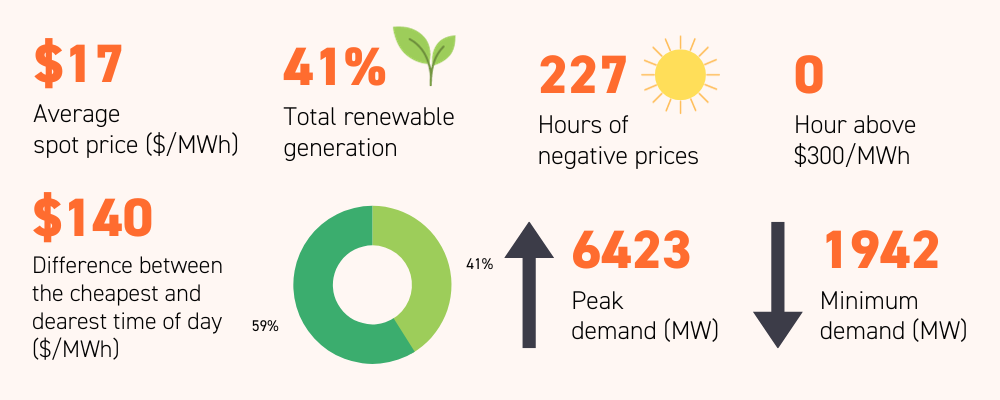
- Average spot price of $17/MWh, with 227 hours of negative prices and no prices above $300/MWh
- $140/MWh difference between lowest and highest time-based average underlying spot price
- Average prices were negative for all periods between 8:00 AM and 4:30 PM during the month
- 41% total renewable generation through the month
- New record low demand for the second month in a row of 1,942MW
- Peak demand of 6,423MW
Looking ahead to November 2023
Higher average temperatures were most pronounced in Queensland and New South Wales. This warm weather was not typically long lasting, and cold breaks in between hot days meant that homes could cool down, decreasing potential cooling demand. As we move into Summer, we would expect to see longer runs of hot days, which would likely increase electricity demand from things like air-conditioners (especially after a few days of sustained high temperatures).
There are some planned outages in New South Wales and Queensland near the end of November. Planned outages are typically less of a concern than unplanned ones, as it gives other generators forewarning of the reduced supply. The longer periods of hot temperatures mentioned above could also increase the likelihood of generator faults, as cooler temperatures can act as a natural coolant for large, hot machines.
A warm start to spring
The Bureau of Meteorology has forecast higher maximum temperatures across much of the NEM in November, with the coasts of south-east Victoria and southern New South Wales getting some reprieve.
Minimum temperatures look to be higher in Victoria and New South Wales, though cooler in South Australia and northern Queensland. Rainfall is forecast to be below historical averages across most of Australia, with the areas around the New South Wales/Queensland border fairly typical.
This coincides with the official Bureau declaration earlier this year of an active El Niño and positive Indian Ocean Dipole event. The positive El Niño is forecast to persist until Autumn 2024, and the positive Indian Ocean Dipole event until early December. As a reminder, these two climate events are an indicator for hotter, drier conditions ahead.
Any questions? Our energy specialists are here to help.
If you’re an existing Flow Power customer, don’t hesitate to reach out to your account manager.
If you’re not a Flow Power customer, feel free to contact our friendly team:1300 08 06 08
hello@flowpower.com.auAlternatively, you can submit your questions through our website contact form here.

